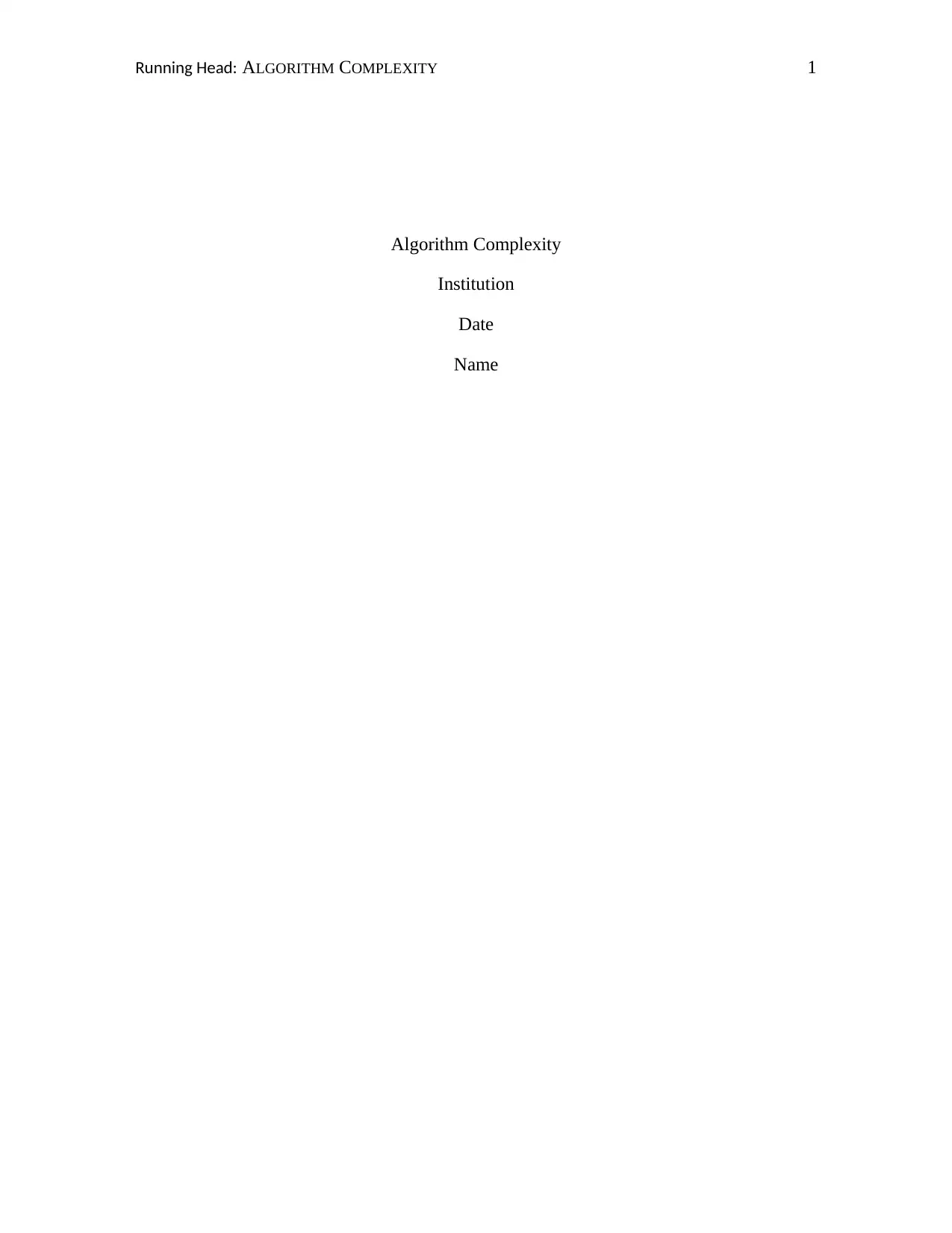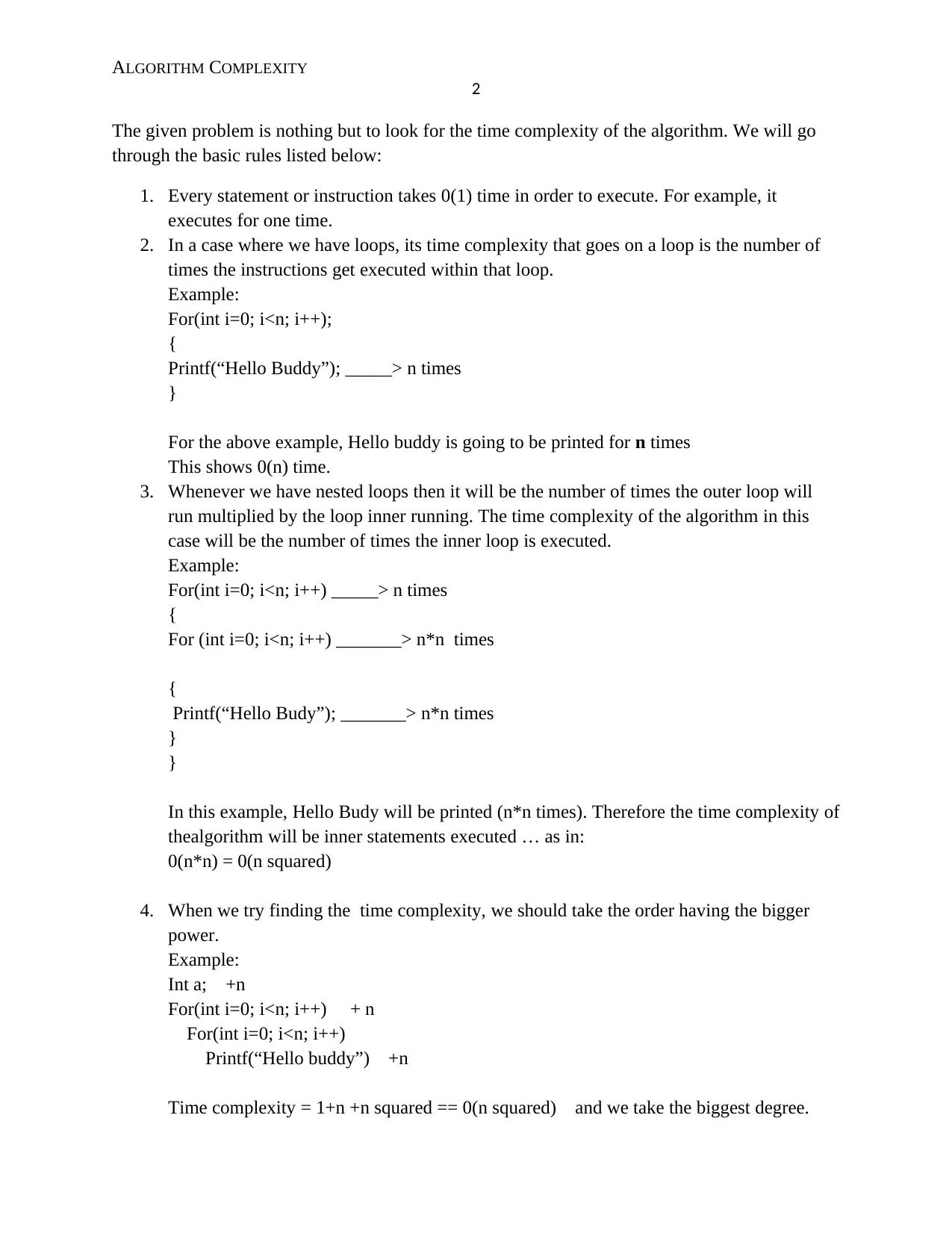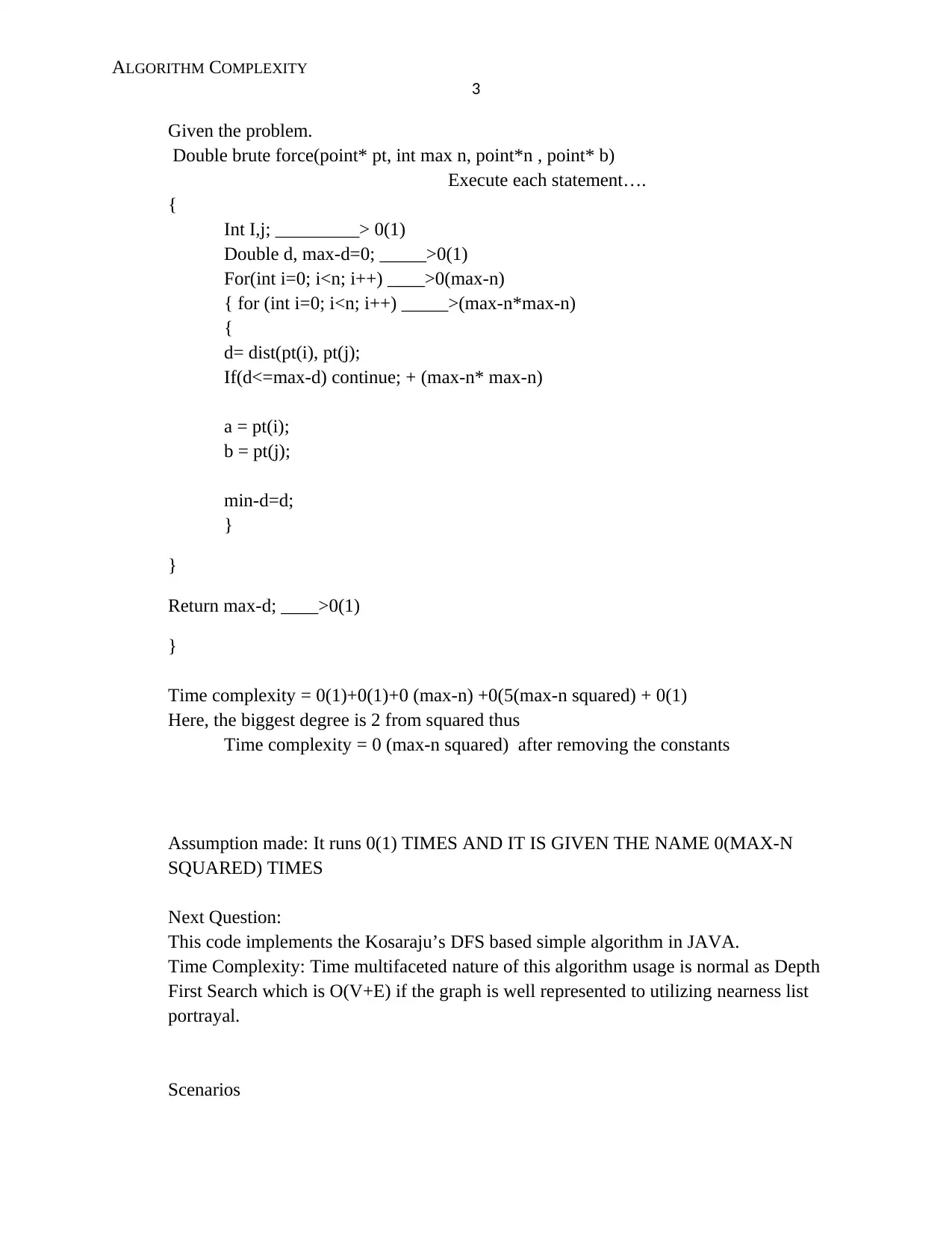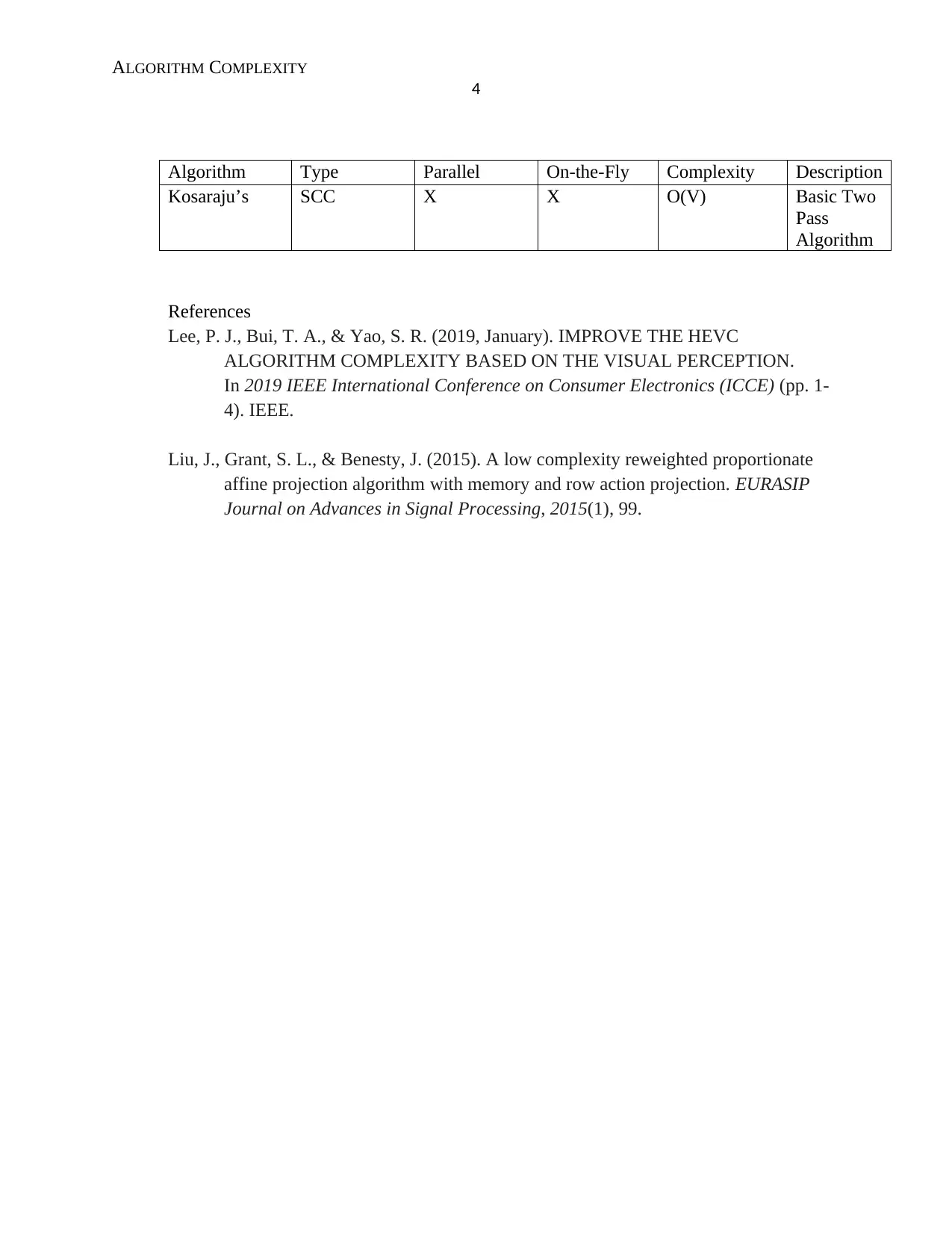Assignment: Analyzing Algorithm Time Complexity and Efficiency
VerifiedAdded on 2022/10/10
|4
|746
|27
Homework Assignment
AI Summary
This document provides a detailed analysis of algorithm complexity, focusing on time complexity. It explains the basic rules for determining time complexity, including the impact of statements, loops, and nested loops. The solution analyzes a brute force algorithm, calculating its time complexity as O(max-n squared). Additionally, it discusses Kosaraju's algorithm, its time complexity (O(V+E)), and its application in a Java implementation. The assignment references relevant research papers on improving algorithm complexity and explores different scenarios and algorithm types. This assignment is a valuable resource for students studying theoretical computer science and algorithm analysis, providing insights into the efficiency and performance of algorithms.
1 out of 4









![[object Object]](/_next/static/media/star-bottom.7253800d.svg)